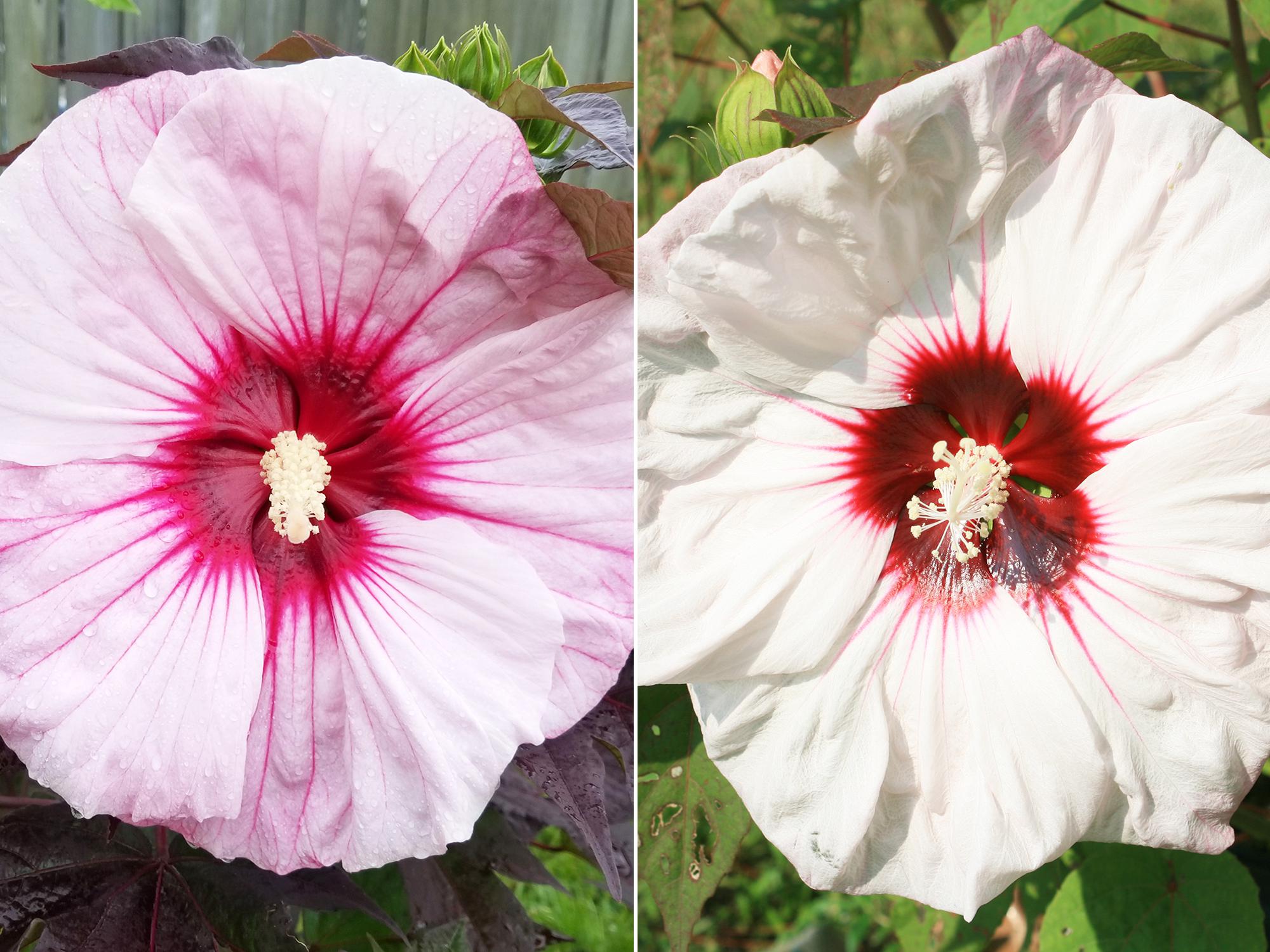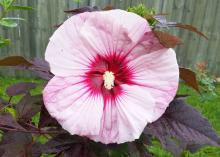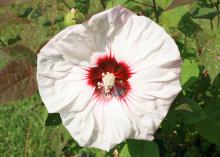Information Possibly Outdated
The information presented on this page was originally released on July 31, 2017. It may not be outdated, but please search our site for more current information. If you plan to quote or reference this information in a publication, please check with the Extension specialist or author before proceeding.
Use hardy hibiscus for late-summer blooms
I think hardy hibiscus is one of those must-have summer plants that we can count on to brighten our gardens and landscapes after a long, hot summer. But these plants are a well-kept secret to many gardeners.
Hardy hibiscus is very different from tropical hibiscus.
Hardy hibiscus is winter-hardy, and the foliage is not as glossy as the tropical varieties. But a trait the two varieties share is their bright, beautiful, gaudy flowers. These enormous flowers add value to our late-summer landscapes.
And when I say enormous, I mean the flowers of hardy hibiscus are absolutely huge, sometimes up to 12 inches across. The size is why they are often called “dinner-plate hibiscus.”
Hardy hibiscus plants are bushy and grow from 2 to 5 feet tall. Foliage colors can differ from light to medium green, with some selections even offering burgundy and dark purple leaves.
There so many available in the nursery trade that I’m only going talk about two of my favorites.
My first experience growing hardy hibiscus in my coastal landscape was with Summerific Cherry Cheesecake.
This plant has a late-summer, month-long bloom period, and, during this time, it is the star of my garden. The 7- to 8-inch-diameter flowers are gorgeous. It can be hard to tell if they are white or pink because the ruffled petals have light pink-tipped edges. I really like the pinkish veining that radiates from the magenta eye.
My other favorite selection is Summerific Perfect Storm. The combination of flower and foliage colors is as dramatic as a summer thunderstorm. This is a more compact selection, and I find it’s perfectly happy growing in a 5-gallon container.
Perfect Storm flowers are huge -- I’ve measured some at over 9 inches in diameter. The number of flowers is also huge -- my Perfect Storm has more than 30 flower buds right now. The white flowers with red eyes are displayed above the maple-like, deep maroon-purple foliage.
Hibiscus plants love the sun and need moist, well-drained soil. Keep these plants watered to ensure larger flowers and lush foliage. Deadhead to improve the appearance of the plant.
It is best to plant hibiscus in the garden before the heat of the summer arrives. Mulch it heavily before the first winter. In spring, cut back any remaining stems to about 6 inches before new growth appears. You will need a strong pair of loppers or a saw to cut this plant back, as the stems can be quite woody and tough.
Hardy hibiscus is always one of the last perennials to emerge in spring, so patience is required. This spring, I thought I had lost mine, but I went ahead and pruned and actually repotted it. It finally started pushing some shoots around May 15. These plants have a vigorous growth rate that more than makes up for a late start.
So if you’re ready to feast on a dinner plate full of gaudy color, take a look at some of the different varieties of hardy hibiscus available at your local garden center.






